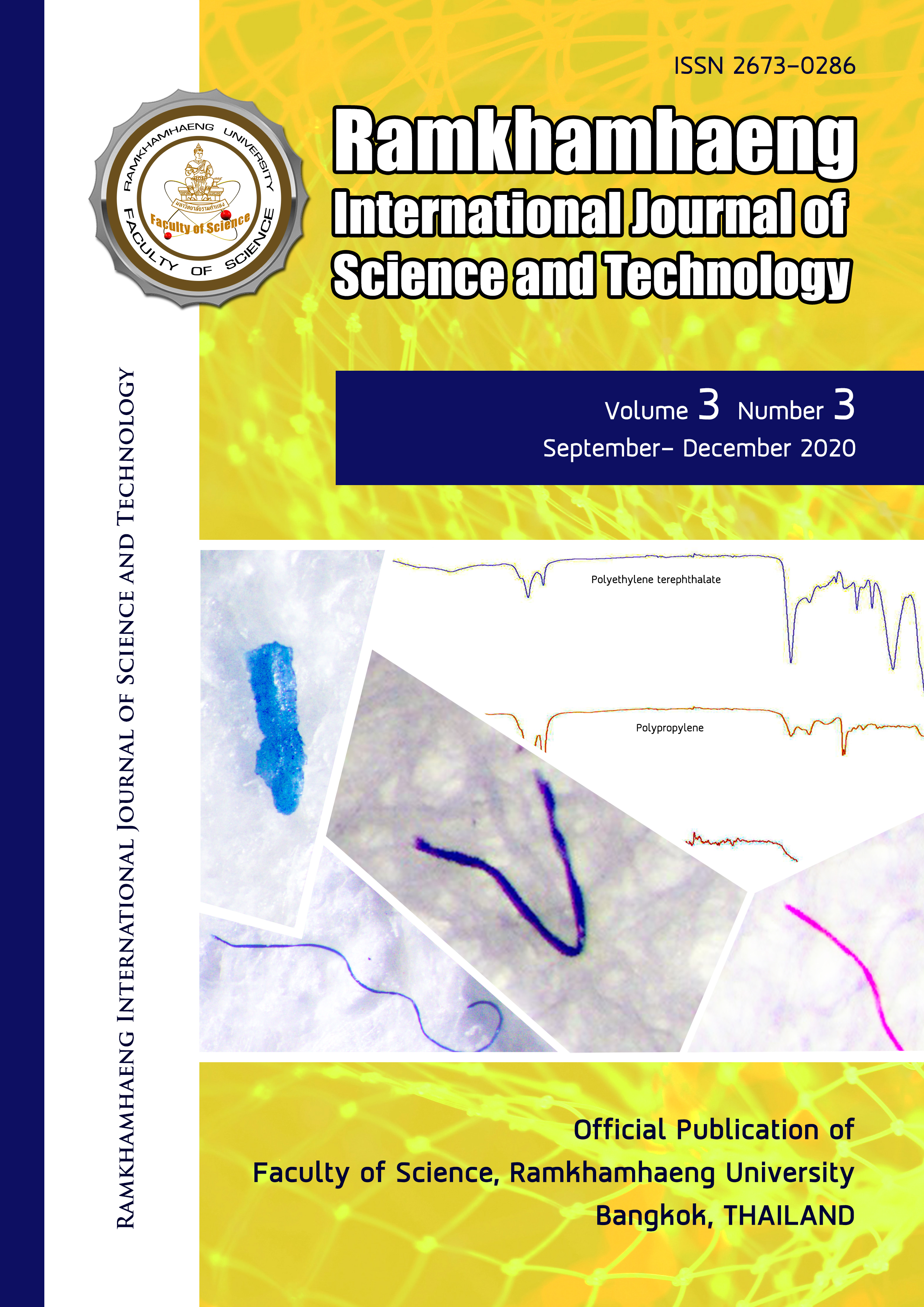Population densities of a sea urchin Diadema setosum on shallow reef flats in the Gulf of Thailand
Keywords:
Diadema setosum, sea urchin, shallow reef flats, Gulf of ThailandAbstract
The sea urchin Diadema setosum is a dominant invertebrate on coral communities in the Western Gulf of Thailand, as mechanical bioeroders that can have an influence on reefs; however, few works have examined its population densities on shallow reef flats. The population of the sea urchin D. setosum on reefs at the islands of Angthong, Chumphon, Phangan, Prachuap Khiri Khan, Samui, and Tao in the Western Gulf of Thailand was investigated during 2017 – 2018. The highest population density of D. setosum was found at the Chumphon archipelago and the lowest one was observed at the Phangan archipelago. We found a significant difference of sea urchin densities (p-value = 0.022), when comparing tourism and fisheries exploited areas, the last holding higher densities. This study showed that sea urchins can be found in high suspended sediment waters or fishing areas. For example, nutrients or organic that positively affected algae of sea urchin food, or factors affecting the amount of food in the area. Populations of D. setosum on shallow reef flats in the Gulf of Thailand can play a major role in coral ecosystems through. However, the data on the population ecology of several reef-associated sea urchins on shallow reef flats are very limited so these important to marine spatial planning in the future.
References
Bellwood, D. R., & Hughes, T. P. (2001). Regional-scale assembly rules and biodiversity of coral reefs. Science, 292(5521), 1532-1535.
Buaruang, J., Yeemin, T., Ruangsawang, N., Nopchinwong, P., & Asa, S. (2002). Population density, recruitment and size structure of a sea urchin, Diadema setosum from coral communities in the inner and the eastern gulf of Thailand. In 28. Congress on science and technology of Thailand, Bangkok (Thailand), 24-26 Oct 2002.
Dotan, A. (1990). Distribution of regular sea urchins on coral reefs near the south-eastern tip of the Sinai Peninsula, Red Sea. Israel Journal of Ecology and Evolution, 37(1), 15-29.
Dumas P, Kulbicki M, Chifflet S, Fichez R, Ferraris J (2007) Environmental factors influencing urchin spatial distributions on disturbed coral reefs (New Caledonia, South Pacific). J Exp Mar Biol Ecol 344:88-100
Dumont, C. P., Lau, D. C., Astudillo, J. C., Fong, K. F., Chak, S. T., & Qiu, J. W. (2013). Coral bioerosion by the sea urchin Diadema setosum in Hong Kong: susceptibility of different coral species. Journal of Experimental Marine Biology and Ecology, 441, 71-79.
English, S., Wilkinson, C., & Baker, V. (1997). Survey manual for tropical marine resources.
Goh, B. P., & Lim, D. Y. (2015). Distribution and abundance of sea urchins in Singapore reefs and their potential ecological impacts on macroalgae and coral communities. Ocean Science Journal, 50(2), 211-219.
Keesing, J.K. and Lucas, J.S. 1992. Field measurement of feeding and movement rates of the crown-of-thorns starfish Acanthaster planci (L.). Journal of Marine Biology and Ecology, 156, 89-104.
Knowlton, N. 1992. Thresholds and multiple stable states in coral reef community dynamics. American Zoologist, 32, 674-682.
Mokady, O., Lazar, B., and Loya, Y. 1996. Echinoid bioerosion as a major structuring force of Red Sea coral reefs. Biological Bulletin, 190, 367-372.
Richmond, R.H. 1993. Coral reefs: present problems and future concerns resulting from anthropogenic disturbance. American Zoologist, 33(6), 524-236.
Sakai K, Snidvong A, Yeemin T, Nishihira M, Yamazato K (1986) Distribution and community structure of hermatypic corals in the Sichang Islands, inner part of the Gulf of Thailand. Galaxea 5: 27-74
Sangmanee, K., Sutthacheep, M., & Yeemin, T. (2012, July). The decline of the sea urchin Diadema setosum affected by multiple disturbances in the inner Gulf of Thailand. In Proceedings of the 12th International Coral Reef Symposium.
Spalding, M., Spalding, M. D., Ravilious, C., & Green, E. P. (2001). World atlas of coral reefs. Univ of California Press.
Siriwong, S. (2017). Coral Reef Tourism, Sustainability and Development: how to Manage it All? (Doctoral dissertation, Prince of Songkla University).
Downloads
Published
Issue
Section
License
Copyright Notice: a copyright on any article in the published journal is retained by the Ramkhamhaeng International Journal of Science and Technology. Readers or Users grant the right to use of the Article contained in the Content in accordance with the Creative Commons CC BY-NC-ND license and the Data contained in the Content in accordance with the Creative Commons CC BY-NC-ND.



